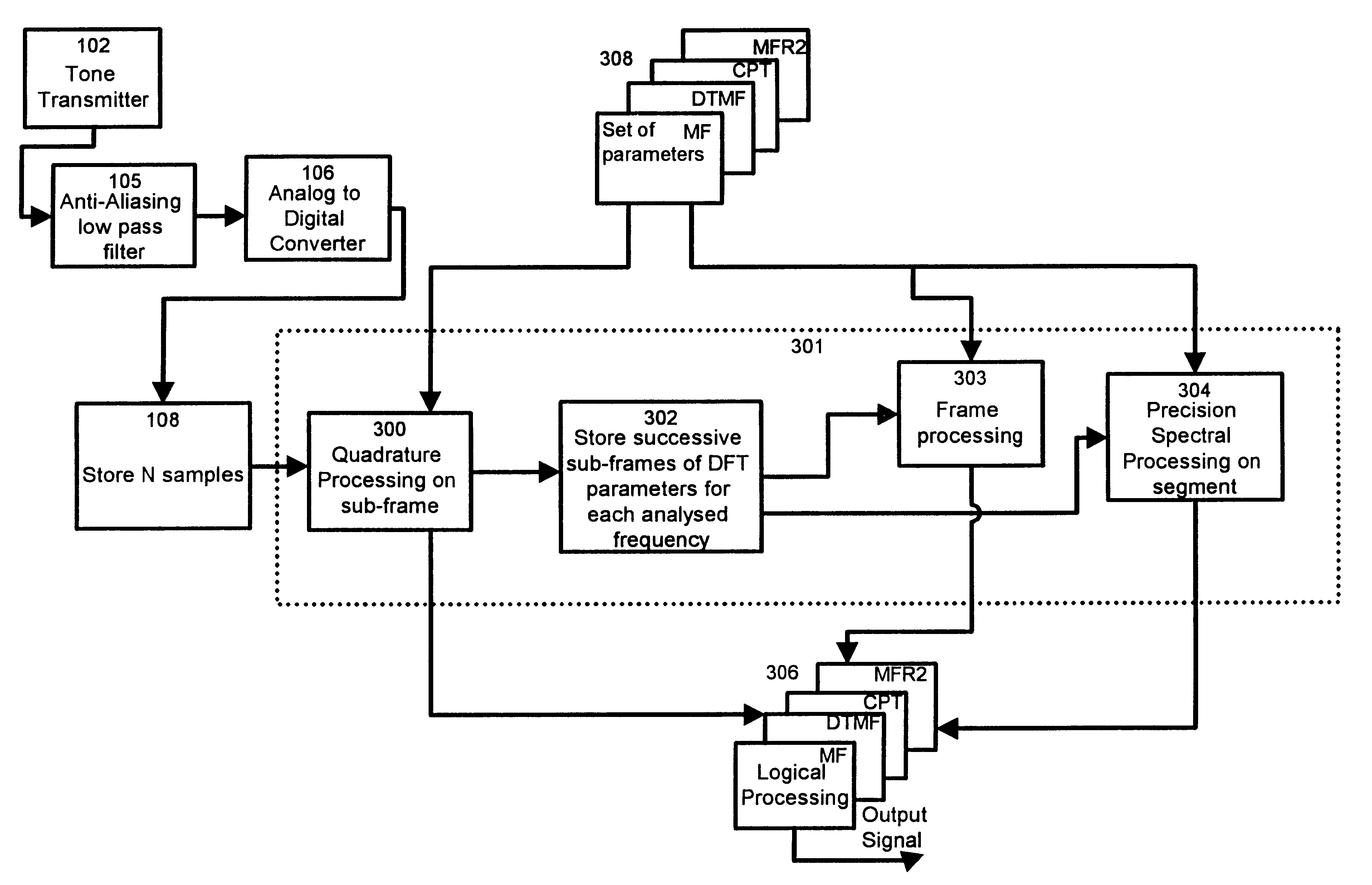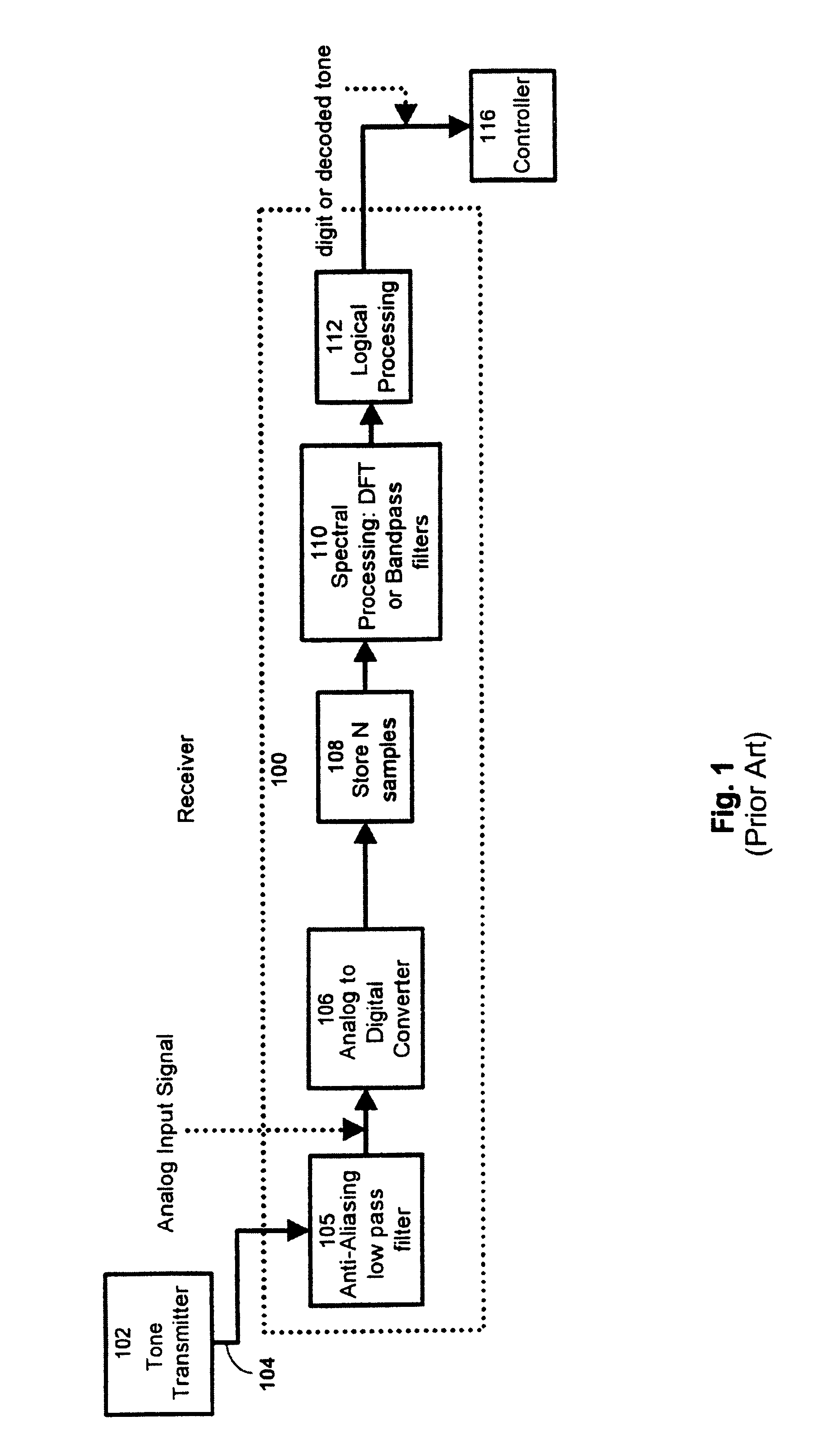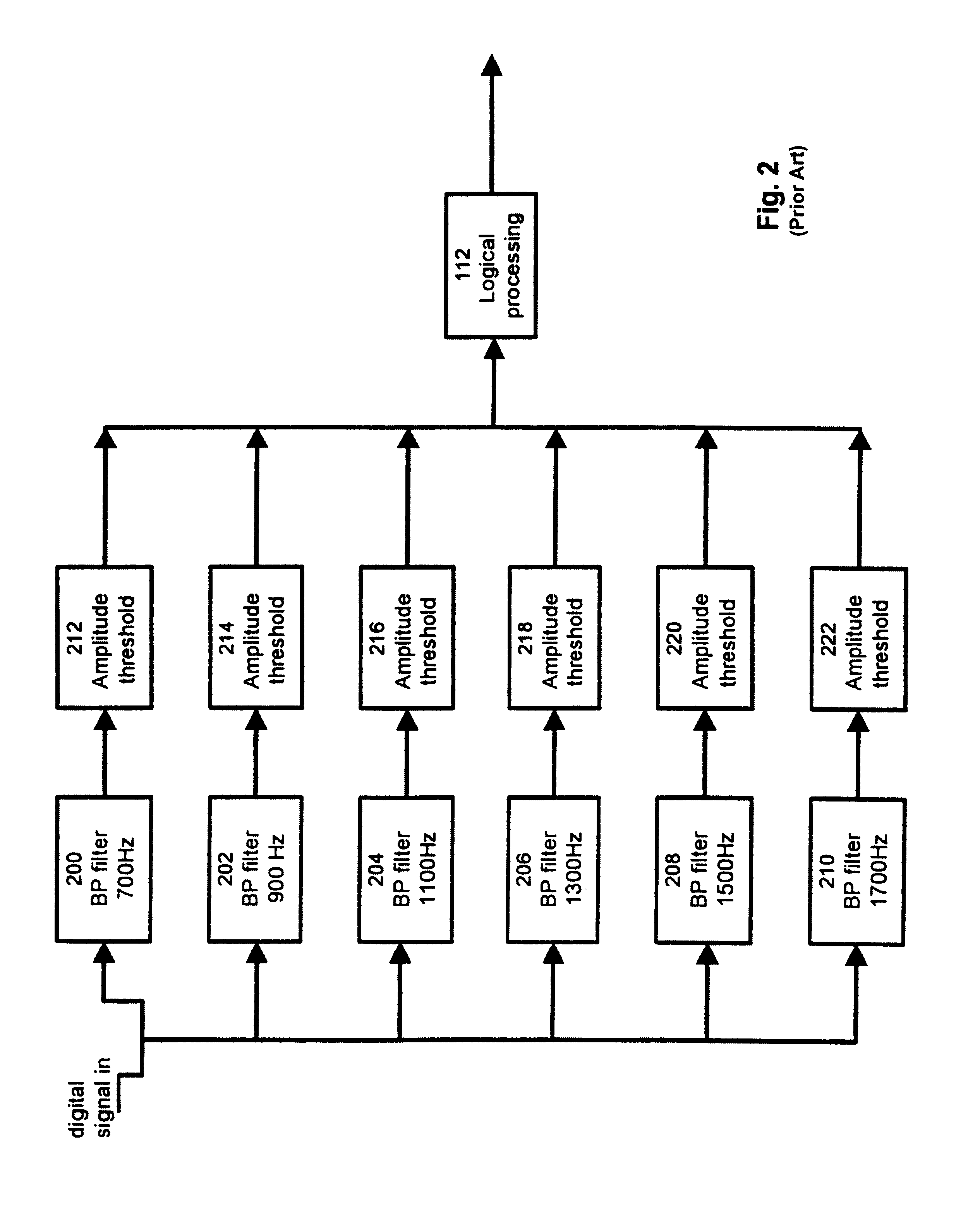Method and apparatus for performing spectral processing in tone detection
a spectral processing and tone detection technology, applied in the field of spectral processing in tone detection, can solve the problems of limiting the system in its processing capability, requiring large computational power, and not being able to automatically redial when faced with a billing signal and fax recognition
- Summary
- Abstract
- Description
- Claims
- Application Information
AI Technical Summary
Benefits of technology
Problems solved by technology
Method used
Image
Examples
Embodiment Construction
For the purpose of this specification the expression "accumulator" is used to designate a device used to sum numbers by adding its current content to an input value and then replacing its current value by the newly computed one. In mathematical terms to perform the operation x=x+y.
For the purpose of this specification the expression "complex accumulator" designates an accumulator where the arguments are of the form "a+ib" and where a and b are real numbers and i=-1. Furthermore this device preferably stores the real and imaginary parts of the result separately.
For the purpose of this specification the expression "complex multiplication" designates a multiplication where the arguments are of the form "a+ib" and where a and b are real numbers and i=-1. Furthermore a device implementing this operation preferably stores the real and imaginary parts of the result separately.
The present inventors have made the unexpected discovery that by performing a first DFT on a short time window (sub...
PUM
 Login to View More
Login to View More Abstract
Description
Claims
Application Information
 Login to View More
Login to View More - R&D
- Intellectual Property
- Life Sciences
- Materials
- Tech Scout
- Unparalleled Data Quality
- Higher Quality Content
- 60% Fewer Hallucinations
Browse by: Latest US Patents, China's latest patents, Technical Efficacy Thesaurus, Application Domain, Technology Topic, Popular Technical Reports.
© 2025 PatSnap. All rights reserved.Legal|Privacy policy|Modern Slavery Act Transparency Statement|Sitemap|About US| Contact US: help@patsnap.com



